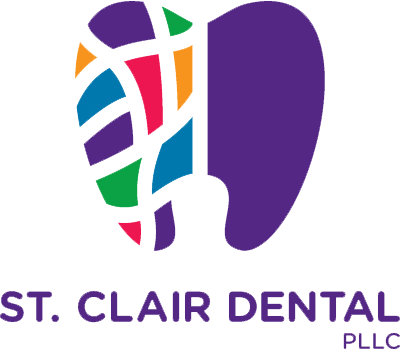Smoking and tobacco use are well-known for their detrimental effects on overall health, but their impact on oral health is particularly severe. From stained teeth to severe gum disease, the consequences of tobacco use can be long-lasting and, in some cases, irreversible. Understanding these effects can help you make informed decisions about your health and take proactive steps to protect your smile.
The Immediate Effects on Your Teeth
Tobacco use, whether through smoking or chewing, has immediate and noticeable effects on your teeth. These are some of the most common issues that arise:
1. Stained Teeth
One of the most visible effects of smoking and tobacco use is the staining of teeth. The tar and nicotine found in tobacco are notorious for turning teeth yellow or brown over time. This discoloration occurs because these substances adhere to the enamel, the outer layer of the teeth, leading to:
- Persistent Stains: Unlike stains from food or drink, tobacco stains are often deeper and more difficult to remove, requiring professional whitening treatments.
- Loss of Luster: The natural brightness of your teeth fades, making your smile look dull and aged.
2. Bad Breath
Smoking and tobacco use are significant contributors to halitosis, commonly known as bad breath. This happens because:
- Dry Mouth: Tobacco reduces saliva production, which is essential for washing away food particles and bacteria.
- Tobacco Odor: The smell of smoke lingers in the mouth, mixing with bacteria and other odors to create persistent bad breath.
The Long-Term Damage to Your Gums
Beyond the surface-level effects, smoking and tobacco use can cause severe damage to your gums, leading to long-term oral health issues:
1. Gum Disease
Gum disease, or periodontal disease, is one of the most serious oral health issues associated with smoking. Smokers are significantly more likely to develop gum disease due to the following factors:
- Reduced Blood Flow: Smoking constricts blood vessels, limiting the flow of oxygen and nutrients to the gums. This hampers the healing process and makes the gums more susceptible to infection.
- Bacterial Growth: The chemicals in tobacco interfere with the normal function of gum tissue cells, making it easier for bacteria to invade the gums and cause infections.
This can lead to:
- Gingivitis: The early stage of gum disease, characterized by red, swollen gums that bleed easily.
- Periodontitis: As gum disease progresses, it can lead to periodontitis, a more severe form that damages the soft tissue and bone supporting the teeth, potentially leading to tooth loss.
2. Receding Gums
Tobacco use can cause the gums to recede, exposing the roots of the teeth. This can lead to:
- Sensitivity: Exposed roots are more sensitive to hot and cold, making eating and drinking uncomfortable.
- Root Decay: Unlike enamel, the roots of the teeth are not protected and are more vulnerable to decay.
Increased Risk of Oral Cancer
One of the most severe consequences of smoking and tobacco use is the increased risk of oral cancer. Tobacco is a major risk factor for cancers of the mouth, throat, and esophagus. The carcinogens in tobacco products can cause mutations in the cells of the mouth, leading to:
- Lesions: White or red patches in the mouth can be precursors to cancer.
- Tumors: Oral cancer can manifest as tumors in the mouth, which may require extensive treatment, including surgery, radiation, and chemotherapy.
The prognosis for oral cancer improves significantly with early detection, but the best prevention is to avoid tobacco use altogether.
Impaired Healing and Dental Procedures
Smoking and tobacco use not only cause oral health problems but also impair the ability to recover from dental procedures. Whether it’s a routine extraction or more complex surgery, smokers often experience:
- Delayed Healing: The reduced blood flow caused by smoking slows down the healing process, increasing the risk of complications such as infections.
- Failure of Dental Implants: Smokers are at a higher risk of implant failure because the toxins in tobacco can interfere with the integration of the implant with the bone.
The Impact on Your Immune System
Tobacco use compromises the immune system, making it harder for your body to fight off infections, including those in the mouth. This weakened immune response can lead to:
- Increased Infections: Smokers are more prone to infections in the gums and oral tissues, which can be harder to treat and more likely to recur.
- Chronic Inflammation: The persistent inflammation caused by tobacco use can exacerbate existing oral health issues and contribute to a cycle of damage and deterioration.
Preventive Measures and Quitting Tobacco
Given the significant risks associated with smoking and tobacco use, prevention and cessation are critical for maintaining good oral health. Here are some steps you can take:
1. Regular Dental Check-Ups
Frequent visits to your dentist are essential for monitoring the health of your teeth and gums, especially if you use tobacco. Your dentist can:
- Identify Early Signs: Catch problems like gum disease or oral cancer in their early stages when they are more treatable.
- Provide Professional Cleaning: Remove stubborn tobacco stains and tartar that you can’t eliminate with regular brushing and flossing.
2. Oral Hygiene Routine
A rigorous oral hygiene routine is vital for minimizing the damage caused by tobacco. This includes:
- Brushing Twice a Day: Use fluoride toothpaste to help strengthen enamel and combat decay.
- Flossing Daily: Remove plaque and food particles from between the teeth and along the gumline.
- Mouthwash: Use an antiseptic mouthwash to kill bacteria and freshen breath.
3. Quitting Tobacco
The most effective way to protect your oral health is to quit smoking or using tobacco products. The benefits of quitting begin almost immediately and include:
- Improved Oral Health: Reduced risk of gum disease, oral cancer, and tooth loss.
- Fresher Breath and Whiter Teeth: Gradual reduction of stains and a return to healthier-looking teeth.
Taking Control of Your Oral Health
Understanding the effects of smoking and tobacco use on your oral health is the first step toward making positive changes. Whether you’re concerned about stained teeth, gum disease, or the risk of oral cancer, taking action now can help you protect your smile and your overall health. If you use tobacco, consider quitting as the most effective way to improve your oral health and reduce your risk of serious health problems.
At St. Clair Dental, PLLC in Granbury, TX, Dr. Maureen Karl and her team are here to support you on your journey to better oral health. From regular check-ups to professional cleanings and personalized advice on quitting tobacco, we’re committed to helping you achieve a healthier, brighter smile.
Sources:
- Albandar, J. M., & Streckfus, C. F. (2000). Tobacco Use and Its Effects on the Periodontium and Dental Implants. Periodontology 2000.
- Johnson, G. K., & Slach, N. A. (2001). Impact of Tobacco Use on Periodontal Health. Journal of Dental Education.
- Warnakulasuriya, S. (2005). Effect of Smoking on Oral Health and the Development of Oral Cancer. Oral Oncology.

